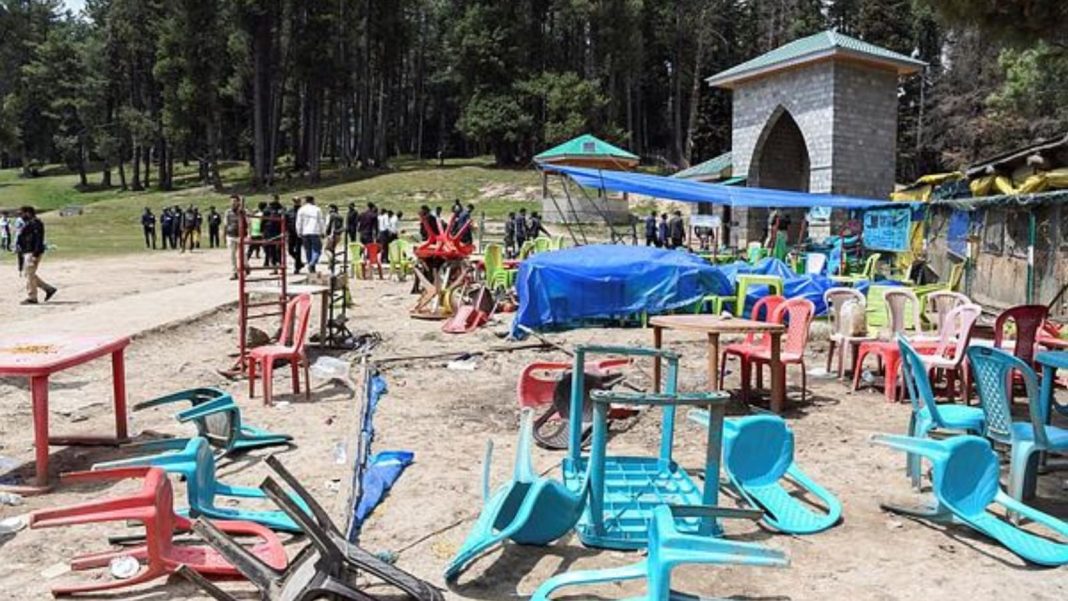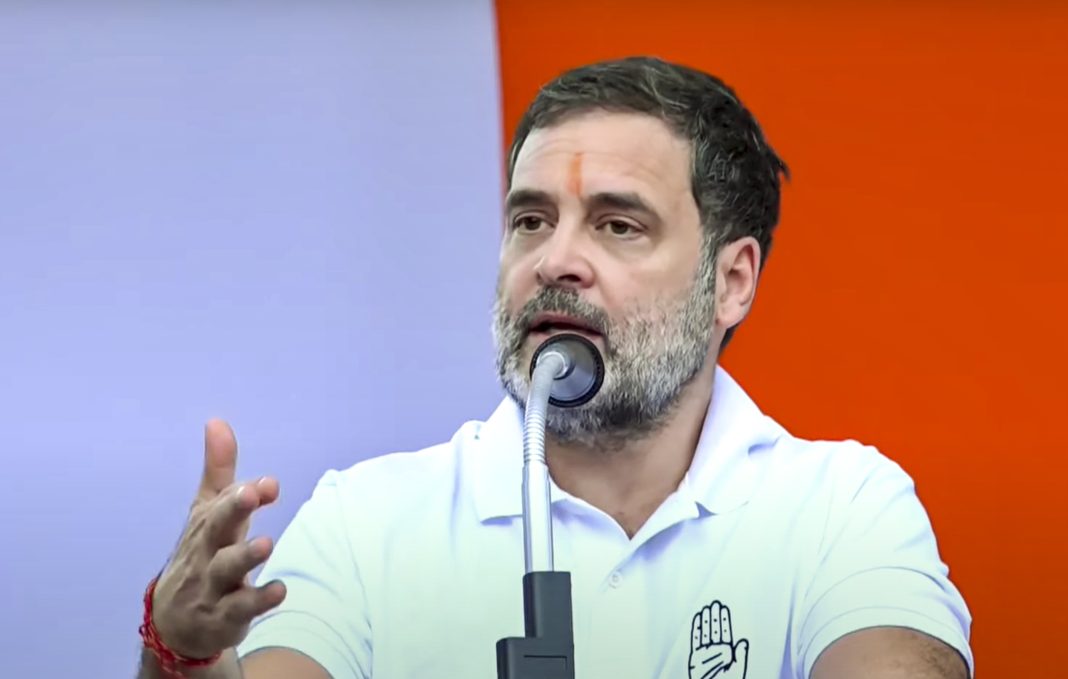By Dipak Kurmi
On a seemingly tranquil Tuesday morning, the Baisaran meadow near Pahalgam — known for its breathtaking vistas and serenity — turned into a site of unimaginable horror. What unfolded was the deadliest civilian-targeted terror attack in Jammu and Kashmir since the 26/11 Mumbai carnage. Twenty-eight innocent tourists, including honeymooners, families, and foreign nationals from Nepal and the UAE, were brutally gunned down in cold blood. The Resistance Front (TRF), a proxy outfit of the Pakistan-based Lashkar-e-Taiba (LeT), claimed responsibility for this calculated massacre. This was not merely an act of violence; it was a chilling declaration — an attempt to dismantle the fragile peace and economic momentum building in the Kashmir Valley.
The attack bore all the unmistakable hallmarks of cross-border terrorism, carefully orchestrated with surgical precision. Even more disturbing is the context in which it unfolded: amidst US Vice President JD Vance’s high-profile visit to India, and concurrent to Prime Minister Narendra Modi’s diplomatic engagement in Saudi Arabia. The timing echoes the infamous Chittisinghpora massacre of 2000, where 36 Sikhs were murdered just before then-US President Bill Clinton’s India trip. The strategic message was clear — derail diplomatic engagement, draw international attention, and portray Kashmir as a volatile nuclear flashpoint.
Perhaps the most painful aspect of the Pahalgam tragedy is its communal targeting. Non-Muslim tourists were selected and slaughtered with impunity. Despite existing security arrangements — checkpoints, patrols, and surveillance — the attackers not only infiltrated the heavily visited area but reportedly donned army fatigues to exploit public trust. Such methods expose dangerous lapses in both intelligence gathering and on-ground preparedness. How could the security apparatus miss the signs, especially after Pakistan’s Army Chief Gen. Asim Munir’s inflammatory remarks just days prior, where he called Kashmir his nation’s “jugular vein” and indulged in a virulent anti-India tirade?
The echoes of past failures and familiar foes haunt every frame of this tragedy. The TRF emerged in the months following the abrogation of Article 370 in August 2019 — a historic decision that revoked Jammu and Kashmir’s partial autonomy. Since then, while the Modi government has touted the region’s resurgence in terms of GDP growth, infrastructure development, and a tourism boom, the specter of militancy has never truly vanished. If anything, the nature of terrorism in Kashmir has mutated. While local recruitment into terror ranks has seen a decline, infiltration by foreign fighters and activation of sleeper cells like TRF has surged.
This new wave of terrorism is increasingly insidious. The use of radicalized local civilians and the adoption of civilian-like personas by operatives marks a shift from the traditional theatre of conflict. The Pahalgam massacre represents not only a tactical failure but a psychological one. Tourists — once symbols of peace and the Valley’s return to normalcy — have now become targets. The audacity of targeting non-combatant civilians in a region marketed globally for its hospitality and scenic beauty is both tragic and telling. It signals a desperate attempt by terror masterminds to reverse the socio-economic gains of recent years.
Indeed, the numbers speak volumes. Kashmir saw a dramatic rise in tourist footfall post-COVID-19, jumping from 800,000 in 2018 to over 3.5 million in 2023. This boom was not just a feather in the Centre’s cap but a lifeline for thousands of locals whose livelihoods depend on tourism. Yet, within hours of the Pahalgam attack, panic swept through the region. Tourists scrambled for early return flights from Srinagar, bookings were canceled en masse, and a sense of betrayal hung in the air. The dream of a resurgent Kashmir was bloodied and bruised.
The local response, however, was notable. On Wednesday, a shutdown swept across the Valley — not one forced by terror or political diktat, but by the anguished conscience of the people. Traders, hoteliers, and civilians closed their businesses in a solemn act of protest, standing in silent solidarity with the victims. This spontaneous closure was more than a gesture; it was a powerful rejection of the extremist narrative, a signal that the Valley’s people — long stereotyped and scapegoated — stand for peace and human dignity.
Still, the attack has exposed the chinks in India’s counter-terror armour. The absence of armed presence in a tourist hotspot at the height of summer season raises serious operational questions. It is clear that a comprehensive overhaul of security protocols around tourism zones is overdue. Army camouflage, when misused by terrorists, becomes a tool of mass deception. The security infrastructure must now move toward the deployment of smart surveillance technologies and improved local intelligence networks. The importance of winning community trust and involving locals in security apparatus — not as informers but as partners — cannot be overstated.
Beyond military and intelligence reforms, India must also unleash a diplomatic blitz. The TRF’s claim that the attack was in retaliation to the issuing of domicile certificates to non-locals adds a dangerous demographic angle to this tragedy. While demographic integration is part of a long-term strategy for stability, the government must also address local anxieties and ensure that development does not feel like demographic displacement. Rebuilding trust in Kashmir must walk hand-in-hand with rebuilding roads, hotels, and tourist infrastructure.
Internationally, India has a compelling case to make. From Tahawwur Rana’s impending extradition for his alleged role in the 26/11 attacks to Pakistan’s habitual sanctuaries for jihadist groups, the evidence is mounting. The global community must now be made to choose between silence and support for a nation that has for decades borne the brunt of cross-border terrorism. Pakistan’s mealy-mouthed “condolences” that stopped short of condemnation are a diplomatic farce. This is the time for India to name and shame Islamabad at every forum — from the United Nations to the G20 — and push for a new global consensus on state-sponsored terror.
But even as the drumbeats of retaliation grow louder, India must walk a careful line. The Pulwama and Uri attacks saw swift military responses that altered the strategic calculus. Whether the Modi government will now opt for a similar “surgical” message remains to be seen. However, the response must be strategic, not reactive. The battle against terror is a marathon, not a sprint.
Ultimately, the Pahalgam massacre must be remembered not just for its cruelty, but for the choices it demands. Will India respond with unity and resilience, or will the wounds be allowed to fester into communal divisions? The terrorists aimed to divide, to terrify, to isolate Kashmir from the world. The best response would be the opposite — a redoubling of our efforts to keep Kashmir open, safe, and thriving.
In that haunting image of a woman slouched beside her slain husband in Pahalgam, there lies a question — one that every Indian must answer: how do we ensure that this never happens again? The answer lies not just in more guns, but in more trust. Not just in more arrests, but in more engagement. Only then can we say that we have truly defeated the darkness.
(the writer can be reached at dipakkurmiglpltd@gmail.com)




